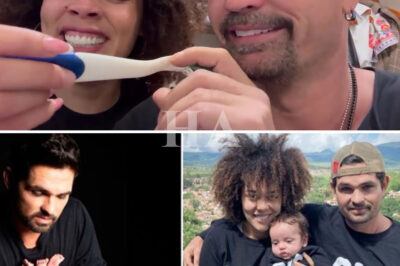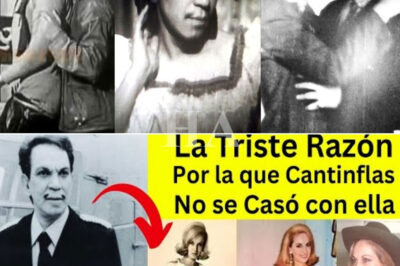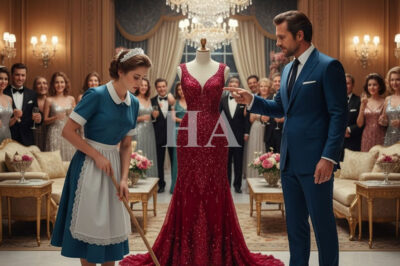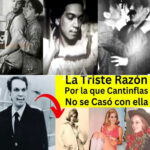The Reaction of Canelo When a Rival Calls Him “Fake” — And What He Did That Changed Everything
It all started in the iconic Romanza Gym in Mexico City. The air was thick with anticipation, the sweat of the fighters under the harsh spotlight, and the unspoken tension of what was supposed to be an ordinary press conference. But the moment that followed would go down in history as one of the most unexpected confrontations in the sport of boxing.
In front of a packed room of reporters, Canelo Álvarez, the world champion boxer, was caught off guard by a remark that echoed through the gym. “You’re a fake, Álvarez. Your legacy is a lie,” shouted Mateo Suárez, the Colombian super middleweight, who was set to challenge Canelo for his title. His voice cut through the tension like a punch, and for a moment, the entire room held its breath.

Canelo’s usually calm and controlled face flickered with a mix of surprise and indignation. The gym, adorned with pictures of legendary Mexican boxing figures, seemed to watch in silence as this new chapter of Mexican boxing was being written. The room was divided, with some Canelo supporters rising in anger while others watched closely, waiting to see how the champion would respond.
For a moment, the silence was deafening. Canelo, dressed in a sharp navy blue suit, leaned toward his microphone. His trainer, Eddie Reynoso, whispered something to him, but Canelo shook his head. What had begun as a routine press event had now become something far more significant.
“I respect all my rivals,” Canelo began, his voice controlled but unwavering. “But respect is earned in the ring, not with empty words.”
In an unexpected move, Canelo stood up, and the cameras flashed in a frenzy. He walked slowly toward Suárez, his every step measured. The room tensed, and outside, in the streets of the Roma neighborhood, a crowd began to gather, drawn in by the sudden drama unfolding.
“I have a proposition,” Canelo said, his eyes locked on his challenger. “Tomorrow at 6 a.m., you and I, no cameras, no press. Come to my training camp, and let’s see who the real fake is.”
The bold challenge caught everyone off guard. Suárez, for the first time since the confrontation began, seemed to lose a bit of his usual confidence. The promoters exchanged nervous glances as they tried to intervene, but Canelo’s challenge hung in the air, almost palpable. “What do you say?” Canelo pressed. “Are you ready to find out who the real fake is?”
The response from Suárez was something no one expected. With a tense smile, he extended his hand. “I’ll be there,” he said, and the crowd murmured in disbelief. Canelo hesitated for a moment but then shook his rival’s hand, signaling the end of the press conference. The damage, however, had already been done.
That night, speculation ran wild on social media as people wondered what would happen at Canelo’s training camp the following morning. The story was all over the news, and no one knew what to expect when the two fighters would meet without cameras or distractions.
The next day, just before dawn, a fleet of black cars pulled up outside Canelo’s training complex in Pedregal. Suárez arrived, accompanied by his trainer and a physical therapist, while his team followed behind. Despite the early hour, the tension was palpable.
Inside the gym, Canelo was already in the ring, skipping rope with mechanical precision. He was sweating, his focus unbroken by the noise and tension. When he saw Suárez enter, he paused, wiping his face with a towel. “I didn’t think you’d come,” Canelo said, calmly.
Suárez, now without his usual bravado, responded. “I didn’t come from Bogotá to back down.”
What followed was something no one could have predicted. The two men, who had been at odds publicly, now faced each other without the cameras and without the grand spectacle of a fight. Canelo proposed a sparring session, but Suárez, wanting to prove something, pressed for more: “Let’s do it without headgear. No excuses. Three rounds with real gloves.”
Eddie Reynoso intervened, cautioning Canelo about the risks, but Canelo, who had already made up his mind, insisted. What followed was a gritty and intense training session that no one in the gym could have anticipated.
The two fighters exchanged punches, testing each other’s skills and resolve. In the second round, a right hook from Suárez grazed Canelo’s eyebrow, drawing blood. For a moment, the gym fell silent. “Stop it now!” shouted one of the promoters, alarmed by the sight of the blood. But Canelo raised his hand, signaling that the sparring should continue. This was no longer about pride—it was about something far deeper.
Instead of responding with anger, Canelo dropped his guard and locked eyes with Suárez. “Tell me to my face, why did you call me fake?” Canelo demanded.
For a moment, Suárez hesitated, but then the truth came out. “Your career was built on fixed fights and hand-picked opponents. Everyone knows it, but no one dares to say it,” Suárez revealed.
In an unexpected move, Canelo removed his gloves and threw them to the floor. Then, with blood still trickling down his face, he took out his phone and showed Suárez something that caused the Colombian to pale immediately.
“These are the doping tests your team falsified three years ago in Cartagena,” Canelo said, swiping through the screen to show official documents with medical seals. “And here are the messages between your manager and the referee of your last fight against Ramírez.”
The room fell into stunned silence as Suárez’s face turned from defiance to fear. Canelo’s cool, calculated response had left his rival exposed. “Now, let’s talk about who the real fake is,” Canelo said, his voice icy.
Suárez was visibly shaken. “How did you get this?” he stammered.
“I’ve been the face of Latin American boxing for ten years,” Canelo replied, wiping the blood from his face with a towel. “Do you think I don’t research every opponent who dares to challenge me? Do you think I don’t have contacts in every boxing commission?”
The tension in the gym was palpable as the two men stood in the ring, facing each other. Canelo’s words were precise, calculated, and devastating. He wasn’t there to threaten or blackmail; he had come for something else.
“What do you want, then?” Suárez asked, his voice shaking.
“I want a real fight,” Canelo said, stepping closer to Suárez. “I want you to be the best Mateo Suárez when you step into that ring at the Azteca. So when I beat you, no one will say it was because of anything other than the fact that I’m the better boxer.”
Then, in a moment that shocked everyone, Suárez’s brother stepped forward. “Mateo, tell him the truth. It’s time.”
A silence fell over the gym as Suárez, his resolve broken, finally spoke. “I was the one who spread the doping rumors last year,” he confessed. “I paid three journalists to spread the story. I needed to destabilize you, to create doubt.”
Canelo listened in silence, his face unreadable. “Why?” he asked simply.
“Because I’m afraid of you,” Suárez admitted, his voice trembling. “I’ve watched you destroy every opponent. I studied every fight, every move. You became my obsession. The obstacle that defined my career.”
The revelation sent shockwaves through the room. This was no longer about a rivalry—it was about fear, vulnerability, and respect.
What followed was an unexpected twist in the world of boxing. Canelo, the man who had been challenged so harshly, did something no one expected. He extended his hand to Suárez, not as a gesture of reconciliation, but as an invitation to something deeper. “Sit down,” he said, motioning toward a corner of the gym. “We need to talk.”
The two men, once bitter enemies, spent the next 45 minutes talking privately. Canelo shared his techniques, answered Suárez’s questions, and offered advice. What was once a confrontation had become a mentor-mentee relationship.
When they returned to their teams, Canelo made an announcement that stunned everyone: “The fight at the Azteca is still on. But we’re going to do something different. For the next two weeks, Suárez and I will train together. We will share strategies and knowledge. The fight will still be real, but we’re going to show the world that boxing isn’t about hate—it’s about skill, respect, and excellence.”
The two rivals trained side by side, and their story became a viral sensation. Fans couldn’t believe the transformation in their rivalry, and the video of their training sessions quickly became a worldwide phenomenon.
When the fight finally took place, it was a classic. Canelo won by unanimous decision, but both fighters emerged as winners in their own way. Suárez, having learned from the best, admitted, “A month ago, I called this man a fake. Today, I can say I was completely wrong. Canelo is not just the best boxer I’ve faced; he taught me what it means to be a true champion.”
Canelo’s response was simple but powerful: “What changed everything wasn’t my reaction to his words. It was his courage to admit the truth, to be vulnerable. That takes more bravery than any fight.”
In the end, it wasn’t the punches or the victories that defined this rivalry—it was the humanity behind it, and the lesson that true greatness lies not in defeating your opponent, but in helping them grow.
News
EL BEBÉ DEL MILLONARIO NO COMÍA NADA, HASTA QUE LA EMPLEADA POBRE COCINÓ ESTO…
El bebé del millonario no comía nada hasta que la empleada pobre cocinó esto. Señor Mendoza, si su hijo no…
At Dad’s Birthday, Mom Announced «She’s Dead to Us»! Then My Bodyguard Walked In…
The reservation at Le Bernardin had been made three months in advance for Dad’s 60th birthday celebration. Eight family members…
Conserje padre soltero baila con niña discapacitada, sin saber que su madre multimillonaria está justo ahí mirando.
Ethan Wells conocía cada grieta del gimnasio de la escuela. No porque fuera un fanático de la carpintería o un…
“ME LO DIJO EN UN SUEÑO.” — Con la voz entrecortada, FERDINANDO confesó que fue su hermano gemelo, aquel que partió hace años, quien le dio la noticia más inesperada de su vida.
¿Coincidencia o señal? La vida de Ferdinando Valencia y Brenda Kellerman ha estado marcada por la disciplina, la fe y…
“NO ERA SOLO EL REY DE LA COMEDIA.” — Detrás de las cámaras, CANTINFLAS también guardaba un secreto capaz de reescribir su historia.
Las Hermanas del Silencio Durante los años dorados del cine mexicano, cuando la fama se tejía entre luces, celuloide y…
Me casaré contigo si entras en este vestido!, se burló el millonario… meses después, quedó mudo.
El gran salón del hotel brillaba como un palacio de cristal. Las lámparas colgaban majestuosas, reflejando el oro de las…
End of content
No more pages to load












